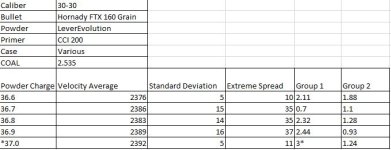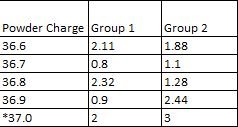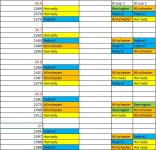USAF Ret,
I think you have the right bullet and powder combination.
In my Marlin 336 XLR, it performed much better than any other powder-bullet combination by a long shot.
I hate to say it, but one group doesn't tell you much because 'shooter induced variation' could mask the differences in the actual group sizes even more than the variation in powder load or brass source. If you are shooting with open sights, the chances for variation are greatly increased. Use a stable front and rear rest to minimize set up variations.
If you think you have found a good powder charge, shoot at least 4 5-round groups and calculate the standard deviation among those groups. Sorting your brass will take one more variant out of the mix.
If the SD is more than 0.1 you can't make any conclusions because the variation is too large (probably caused by set up inconsistency - I had the same problem so don't feel like the Lone Ranger). In reality, any one of the 4 groups may be your median group size. You might only find that out by shooting more than 20 groups for a statistically valid sample.
Trigger time with your rifle and becoming very aware of your set up process while using a stable rest will help you get it under control. There is a reason that custom rifle manufacturers use solid test fixtures when shooting test targets. It takes the shooter out of the equation.





